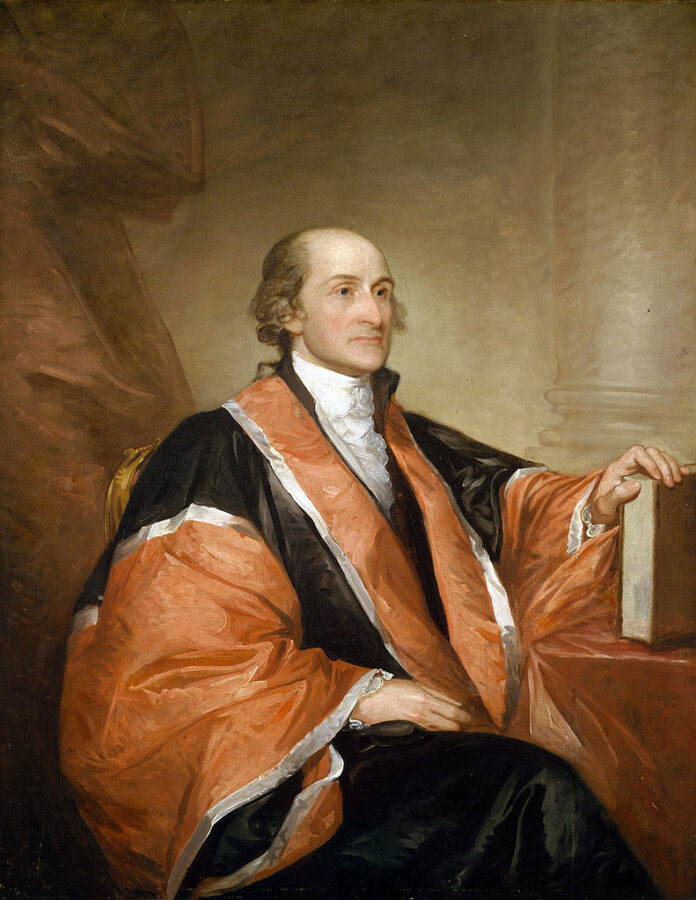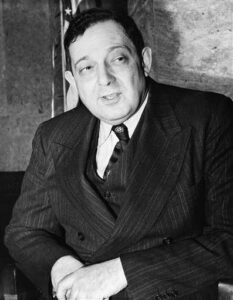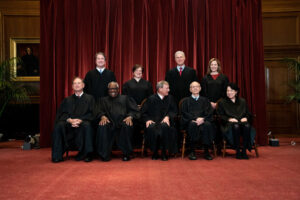who was the first chief justice of the supreme court
Who was the First Chief Justice of the Supreme Court?
The Chief Justice of the United States is the highest ranking judge in the country and head of the judicial branch of the federal government. As Chief Justice, they preside over the Supreme Court and play an important role in shaping the nation’s laws and judiciary. But who was the very first person to hold this esteemed position?
John Jay was appointed as the first Chief Justice of the Supreme Court in 1789, setting several important precedents and helping establish the authority and legitimacy of the Court during its formative years.
John Jay
John Jay was born in 1745 into a wealthy family in New York. He had a successful career as a lawyer and politician, strongly opposing British rule during the American Revolution.
After independence, Jay was appointed as the first Chief Justice of the Supreme Court by President George Washington in 1789. The Supreme Court had just been established that same year under the new U.S. Constitution.
Jay only served as Chief Justice until 1795, when he stepped down to become Governor of New York. During his tenure, however, he set some crucial precedents and helped affirm the Court’s powers.
John Jay’s Contributions
As the inaugural Chief Justice, John Jay played a pivotal role in shaping the early Supreme Court. Some of his major contributions included:
- Helping establish the authority and legitimacy of the Court – When Jay first took office, the judiciary lacked prestige and influence. His conduct as Chief Justice helped earn respect for the Court.
- Setting important legal precedents – Jay and other early justices established bedrock principles like judicial review, which grants courts power to strike down unconstitutional laws.
- Handling foreign affairs – Jay was dispatched by President Washington to negotiate disputes with Britain, securing important treaties.
In essence, Jay shaped the Chief Justice role by balancing judicial duties with statesmanship and diplomacy.
Challenges Faced by Jay
Despite his accomplishments, Jay faced substantial challenges as the inaugural Chief Justice.
- Initially, the Court lacked prestige and power. It had yet to assert its authority over the other branches or earn public credibility.
- Jay bore a heavy workload on the fledgling Court while also handling time-consuming diplomatic missions for President Washington.
- No formal quarters or structure for the Court existed at first, forcing it to meet in various locations like taverns and legislative halls.
Through prudence and diplomacy, Jay helped establish the Supreme Court as a co-equal branch and solidify the Chief Justice’s role despite these obstacles.
Resignation and Later Career
After serving around six years, John Jay stepped down from his position as Chief Justice in 1795.
- He resigned to become the Governor of New York, having been persuaded that he could do more good in that role.
- When President John Adams tried to reappoint Jay as Chief Justice in 1800, Jay declined, citing the Court’s continued lack of energy and influence compared to the other two branches.
After his retirement from public service, Jay lived quietly with his wife on their farm in Westchester County, New York. He died in 1829 at the age of 84.
Jay’s Legacy
Although his tenure was relatively brief, John Jay left an enduring legacy as the first Chief Justice:
- He shaped the Court’s powers and cemented the judiciary as an independent branch of government.
- Jay established precedents for judicial review and restraint, advocating strong but measured exercise of the Court’s authority.
- His diplomatic experience informed his pragmatism and prudence as Chief Justice.
- Historians view Jay as a pivotal founding father whose statesmanship greatly influenced America’s early years under the Constitution.
Later Supreme Court Chief Justices
John Jay was succeeded in turn by Oliver Ellsworth from 1796-1800 and then John Marshall from 1801-1835.
- Ellsworth helped establish judicial review principles.
- Marshall vastly expanded the Court’s influence through decisions like Marbury v. Madison and made the Chief Justice a more powerful role.
But Jay deserves credit as the one who laid the Court’s cornerstone and navigated its formative challenges.
Conclusion
As the first ever Chief Justice of the Supreme Court, John Jay played a crucial part in U.S. history by ensuring the judiciary’s independence and setting foundational precedents. Although he only served briefly, Jay helped guide the Court through its uncertain early years, establishing the authority and dignity of the office of Chief Justice itself. His prudent leadership put the Court on solid footing to become the respected institution it is today.
FAQs
Who nominated John Jay as the first Chief Justice?
President George Washington nominated John Jay as the first Chief Justice in September 1789. Jay was later confirmed unanimously by the Senate.
How long was Jay’s tenure as Chief Justice?
John Jay served as Chief Justice for just over five years, from October 1789 to June 1795. His term lasted one year less than a full six-year appointment.
What was Jay’s most famous case as Chief Justice?
One of Jay’s most significant rulings was in Chisholm v. Georgia in 1793, which affirmed the Court’s jurisdiction over disputes between states and citizens of other states.
Why did Jay resign as Chief Justice in 1795?
Jay stepped down primarily to become the Governor of New York. He had been persuaded that he could do more to serve the young nation in that elected executive role.
Who succeeded Jay as Chief Justice?
After Jay’s resignation, John Rutledge briefly served as Chief Justice but was not confirmed by the Senate. Oliver Ellsworth was then confirmed as the next Chief Justice.








